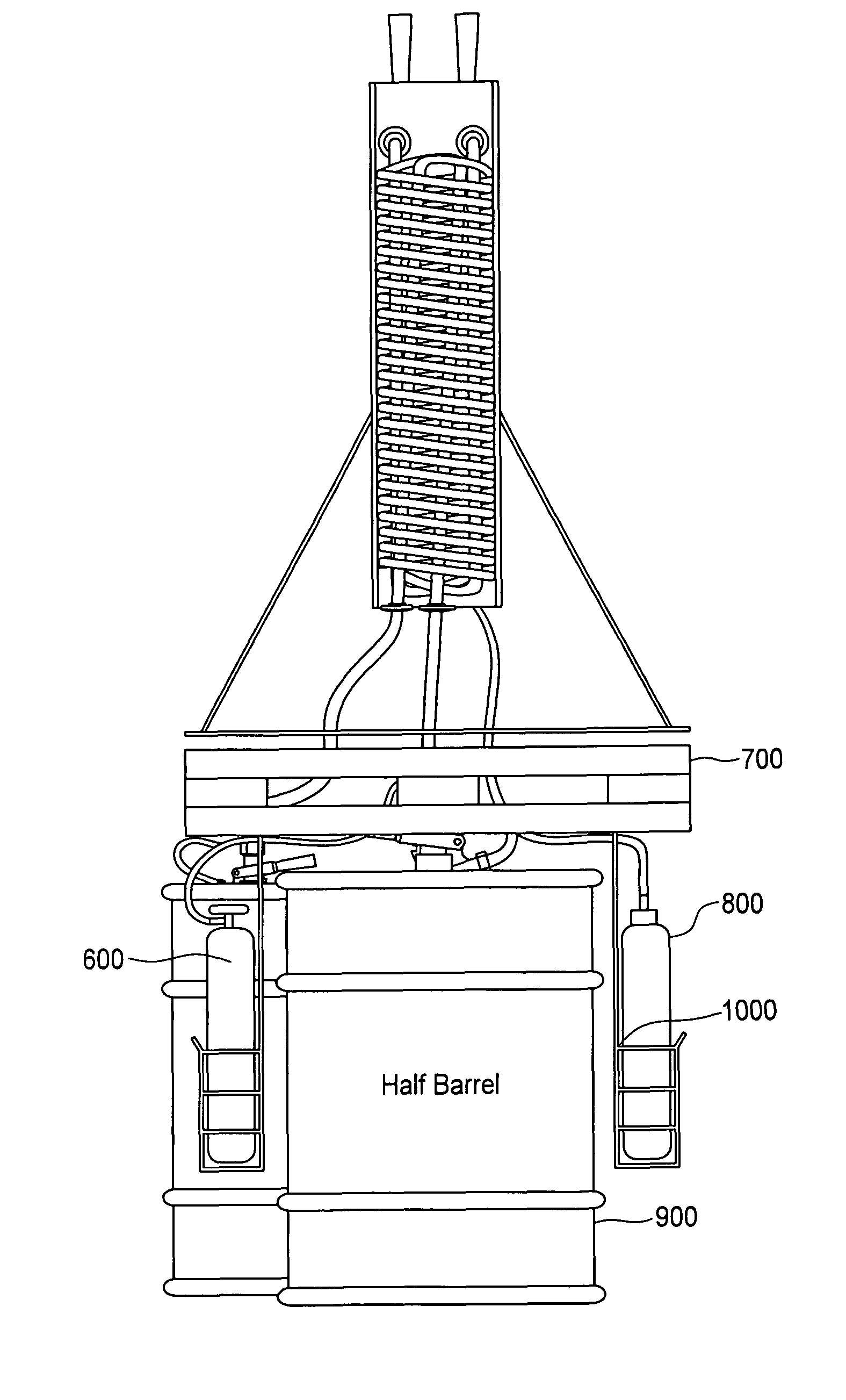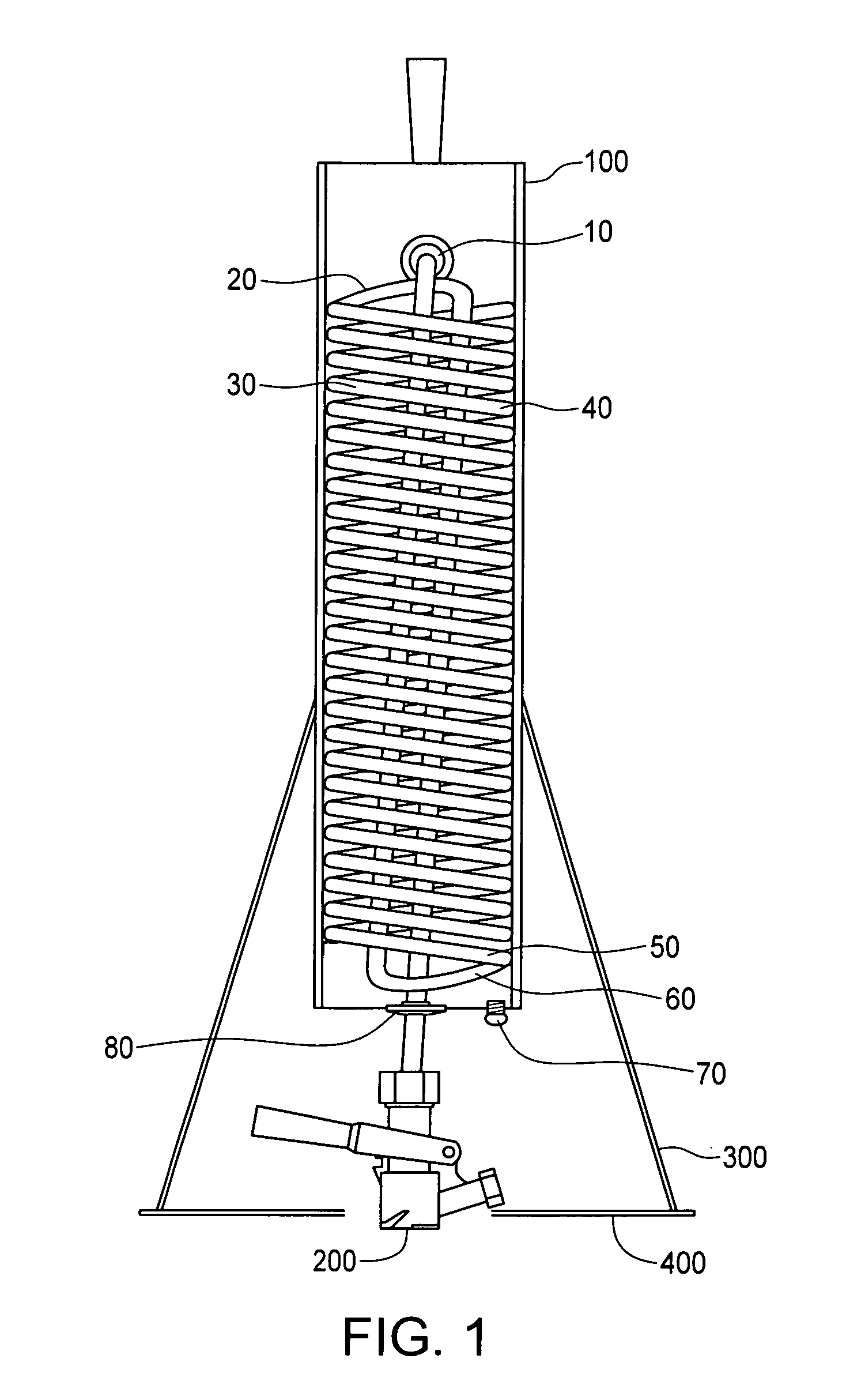Beer dispensing device and system
a technology for dispensing devices and beverages, applied in the direction of liquid dispensing, liquid transferring devices, packaging, etc., can solve the problems of high energy consumption, difficult to transport, set up or break down, and large system space requirements, so as to reduce the amount of space required, convenient pouring height, and safe and visible neat beer dispensing area
- Summary
- Abstract
- Description
- Claims
- Application Information
AI Technical Summary
Benefits of technology
Problems solved by technology
Method used
Image
Examples
Embodiment Construction
[0075]The figures and detailed descriptions of the figures do not reflect all embodiments of the present inventive device and system, but are provided for example and explanatory purposes, as described below. For example, certain embodiments of the present inventive device and system include one or more of balance legs, a structure protruding from the housing component and extending towards the keg couple that encloses at least one beer line, a combined single piece base plate and spacer plate, a carrying component, etc., and may involve various configurations of the set up as described herein, even if not specifically shown in the figures.
[0076]FIG. 1 shows a back internal view of single faucet embodiment of the present invention. Component (10) is the back of the beer shank and washer that is part of the faucet. The plastic beer line connects to this shank so beer can flow from the coils and out through the faucet. Component (20) refers to the wide portion of a plastic beer line u...
PUM
 Login to View More
Login to View More Abstract
Description
Claims
Application Information
 Login to View More
Login to View More - R&D
- Intellectual Property
- Life Sciences
- Materials
- Tech Scout
- Unparalleled Data Quality
- Higher Quality Content
- 60% Fewer Hallucinations
Browse by: Latest US Patents, China's latest patents, Technical Efficacy Thesaurus, Application Domain, Technology Topic, Popular Technical Reports.
© 2025 PatSnap. All rights reserved.Legal|Privacy policy|Modern Slavery Act Transparency Statement|Sitemap|About US| Contact US: help@patsnap.com



